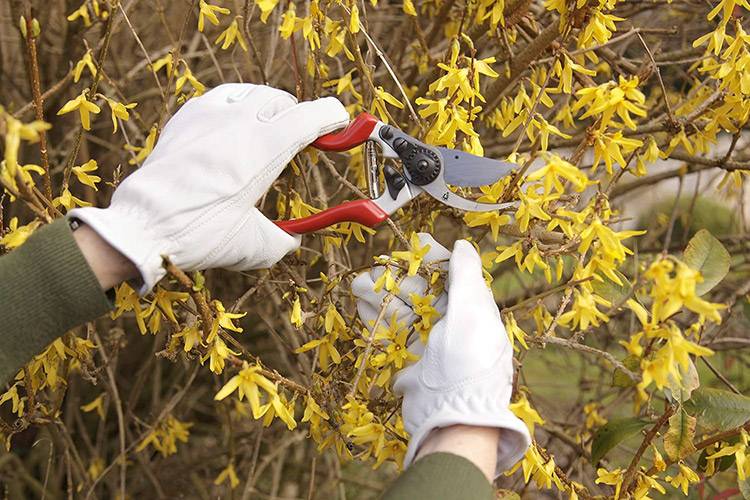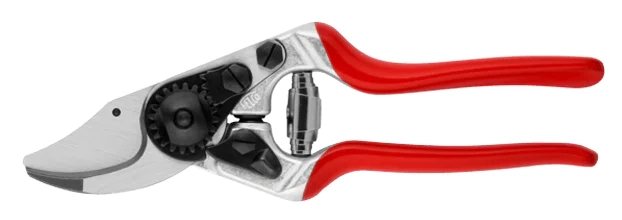Beautiful Plants For Your Interior

Left Handed Secateurs: Finding The Right Fit For You
Left handed secateurs, or pruning shears or garden pruners, are specialised cutting tools designed to cater to the unique needs of left-handed individuals engaged in gardening and horticultural activities. These garden tools are specifically crafted to accommodate the natural hand motion of left-handed users, offering a comfortable and more efficient ‘cutting’ experience. Check out our buyer’s guide on the best left handed secateurs for effortless pruning
Unlike traditional secateurs, left-handed secateurs feature a design that mirrors the natural hand movement of left-handed individuals. The benefits of using left-handed secateurs are substantial for left-handed gardening individuals.
These specialised tools are specifically designed to accommodate the natural hand motion of left-handed users, providing a more comfortable and efficient cutting experience.
By featuring reversed cutting blades, left-handed secateurs enable left-handed gardeners to exert force and control with their dominant hand, reducing strain and discomfort during pruning tasks.
The ergonomic handles of left-handed secateurs are tailored to fit the contours of the left hand, promoting a comfortable grip and minimising hand fatigue during extended use.
Additionally, the availability of various styles and sizes ensures that left-handed individuals can select secateurs that best suit their specific gardening needs, further enhancing their overall experience and productivity in tending to plants and shrubs.
How Do Left-Handed Secateurs Work
Unlike their right-handed counterparts, left-handed secateurs are an intricate mix of ergonomics and design.
Forget contorting your hand to fit a right-handed mold. Left-handed secateurs boast handles meticulously sculpted for the natural left-hand grip. The upper handle curves outward, while the lower handle angles inward, mirroring the comfortable ‘handshake’ position. This intuitive design minimises strain and allows your hand to effortlessly close the blades with minimal twisting or awkward adjustments.
No more peering over or around the blades to line up your cut. Left-handed secateurs cleverly reverse the blade configuration, placing the upper cutting blade on the left side. This simple switch brings the line of sight and the cutting action into perfect alignment, offering unparalleled visual clarity and control.

Left Handed Secateurs: Left-handed ‘By-Pass’ Secateurs Cleverly Reverse The Blade Configuration, Placing The Upper Cutting Blade on The Left Side.

Right Handed Secateurs: The Cutting Blade is on The Rightside of These By-Pass Secateurs
Gone are the days of ‘jagged edges’ and ‘crushed’ plant tissue. The ‘reversed’ blade configuration not only improves visibility but also optimises the cutting motion. As you squeeze the handles, the upper blade glides past the lower blade, mimicking the natural direction of your left-hand stroke. This creates a clean, precise cut that minimises damage to delicate plant tissues.
How to Choose The Right Left Handed Secateurs
When choosing left-handed secateurs, several key factors should be considered to ensure an optimal selection. Firstly, it is important to look for models with reversed cutting blades, specifically designed to accommodate the natural hand motion of left-handed individuals.
Ergonomic handles that fit the contours of the left hand are essential for promoting a comfortable grip and reducing hand fatigue during prolonged use. Additionally, the availability of different styles and sizes allows left-handed gardeners to select secateurs that best suit their specific gardening tasks and preferences. Check out our buyer’s guide ‘Best Left Handed Secateurs for Effortless Pruning‘ for the best brands of left handed secateurs currently on the market.
How to Use Left Handed Secateurs
Using left-handed secateurs is quite straightforward, but here’s a detailed guide to help you master your pruning technique:
Finding your Grip:
Mirroring Handshakes
Hold the handles comfortably, mimicking a natural handshake position. Your dominant hand should operate the upper handle, while your thumb activates the locking mechanism if present.
Finding the Sweet Spot
Position your hands so they feel relaxed and secure on the handles. You shouldn’t need to twist or contort your wrist to reach the triggers or cutting area.
Making the Cut:
Targeting Triumph
Place the blades around the branch you want to cut, with the lower blade resting against the wood and the upper blade on top. Maintain a clear line of sight to the cutting area.
Squeeze with Confidence
Apply steady pressure with both hands until the blade cuts through the branch completely. Don’t force it; let the tool’s mechanics do the work.
Repeat and Refine
Continue snipping away, using smooth, controlled movements and enjoying the effortless control and precise cuts of your left-handed secateurs.

How to Use Left Handed Secateurs: Adopt a Natural Handshake Position.
Common Problems with Left Handed Secateurs
While left-handed secateurs offer significant advantages to the lefties, they’re not immune to challenges, much the same as the right-handed versions. Here are some common problems you might encounter and how to tackle them:
Difficulty Finding Left Handed Models
Online retailers like Amazon and speciality gardening stores often offer a wider selection of left handed garden hand tools than perhaps those at your local garden shop.
Smaller, left-handed-focused brands like Felco might have better availability.
Awkward Grip or Hand Fatigue
Ensure your hand position mirrors a handshake, with your dominant hand on the upper handle and your thumb resting comfortably on the trigger. Some models allow adjusting tension for smoother cutting action. Avoid overexertion, especially when starting. Listen to your body and take breaks to prevent fatigue. Consider investing in higher-quality left-handed secateurs with ergonomic handles and improved balance.
Dull Blades Lead to Imprecise Cuts
Dull blades require more force and lead to jagged cuts. Sharpen your blades after each use or at least once a month for optimal performance. A good sharpening stone is a worthwhile investment for long-term maintenance.
Sap Build-up Affecting Cutting Action
Regularly clean sap and debris from the blades with a damp cloth. Some left-handed secateurs have built-in sap grooves to channel away sticky sap. A thin layer of lubricant on the blades can help prevent sap build-up and ensure smooth operation.
FAQ’s
Do I Need Left-Handed Secateurs If I’m Left-Handed?
While you can technically manage with right-handed tools, left-handed secateurs offer significant advantages. They provide effortless control, precise cuts, increased efficiency, and reduced risk of injury.
How Much Do Left-Handed Secateurs Cost?
Left-handed secateurs can range in price from budget-friendly models to high-performance options. Generally, expect to pay slightly more than right-handed tools due to their niche market.
Are There Any Left-Handed Secateur Accessories I Should Consider?
A holster keeps your secateurs readily accessible on your belt. Having extra blades on hand also ensures you’re never caught unprepared with dull blades. Use an SAP remover, to quickly remove sap buildup from the blades and pivot points.
Conclusion
Ultimately left-handed secateurs are a useful tool for individuals who prefer using their left hand for gardening tasks. These specially designed secateurs are ergonomically crafted to provide comfort and efficiency, making pruning and cutting tasks easier for left-handed users. With their specialised design, left-handed secateurs ensure that individuals can maintain their gardens with ease and precision.
